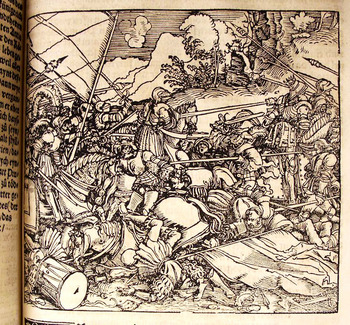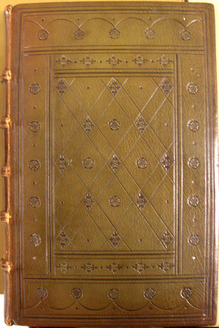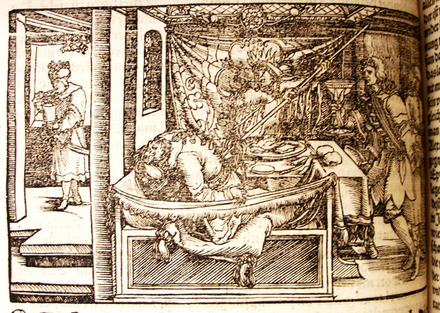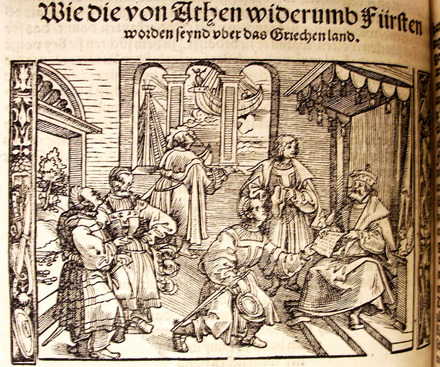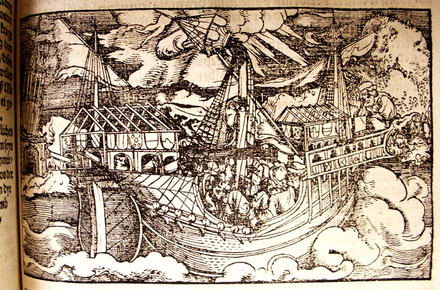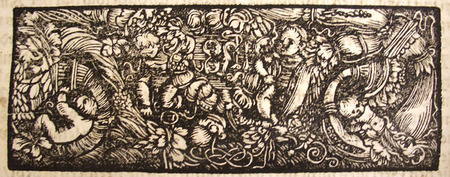Graphic Arts holds the first German edition of Historiae Philippicae. For the 1470 Venice edition, published by Nicolas Jenson, see Rare Books: Kane Collection (ExKa) Incunabula 1470 Justinus. The original unabridged work was written in forty-four books by the Augustan historian Pompeius Trogus.
This edition has a large woodcut on the title page, 49 text illustrations, and 21 chapter tailpieces, chiefly by Wieditz and Breu the elder. Hans Weiditz II was a German woodcutter born sometime before 1500 and died sometime around 1536. The Getty’s union list of artists’ names notes that he was probably, but not certainly, the son of the German sculptor, Hans Weiditz I (ca. 1475-ca. 1516) and that he may have been born in Freiburg im Breisgau. Although many scholars (Dodgson, Friedländer, Fraenger) agree that Hans Weiditz II and the Master of Petrarch are the same artist, there is still debate about this issue. Musper and Buchner, for example, distinguish two hands when contrasting work from Strasbourg with that from Augsburg.
We know very little about Justin (Marcus Junianius Justinus), a Latin historian who lived under the Roman Empire. In his preface, he described this book as a collection of the most important and interesting passages from the voluminous Historiae philippicae et totius mundi origines et terrae situs, written in the time of Augustus by Pompeius Trogus.